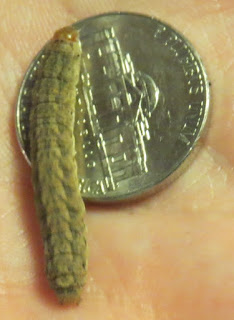Monday, September 14, 2015
Cuttworms in Alfalfa
I just saw a hay field near Carlsbad that was not greening up due to a very heavy infestation of cutworms. It looked similar to infestations Woods and I saw in July 2010 south of Carlsbad. One of the biggest problems is that they are not noticed until a cut field doesn't green up and at that point the larvae are often too large to treat.
The easiest way to look for them is to check under the windrows since the larvae collect under there during the day to avoid heat and light. They feed at night and in 2010 kept feeding on cut stands to where some growers lost not just a cutting but the whole stand.
There are a few things that can be considered when larvae are too large for insecticide applications
Irrigate during the day so when larvae move to avoid drowning birds have a chance to pick at them.
If a field is due to be cut but larvae are actively feeding and too large to treat, wait a few days before cutting so they are closer to pupating and you don't have a stressed stand further stressed by cutworm feeding.
If hay is already cut bale it as soon as possible. That will pick up some cutworms and get them out of the field and expose those left to heat and low humidity.
Consider waiting to plant new hay until the problem generation has pupated and there is no active feeding.
The last time this happened it was limited to a number of fields in south Eddy Co. but was not widespread. Hopefully this is in a limited area but it was very bad last time so you need to know.
This is the publication we wrote after the last problem: http://aces.nmsu.edu/pubs/_a/A335/welcome.html
Jane
Jane Breen Pierce Ph.D
Research/Extension Entomologist
ASC Artesia
575 365 8320
Greg Alpers sent this:
Going back to our past experiences in Eddy co. The best control was Intrepid at 8 ounces. Lorsban, Cobalt or pyrethroids alone do not control all 3 cutworms species. Recent experience shows Intrepid at 6 ounces plus 1.5 pints of Cobalt Advanced. 3 different actives, controls all 3 cutworms and give good residual.
Greg
Subscribe to:
Post Comments (Atom)



No comments:
Post a Comment
Note: Only a member of this blog may post a comment.